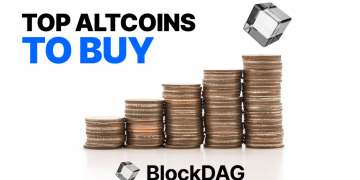What Is Tokenomics?
What is tokenomics? Tokenomics is the short form of the broader term ‘token economics’ that the cryptocurrency proponents use to point toward how the token will follow the monetary policy with simultaneous progress in the project over time. Eventually, the expression tokenomics takes into account a vast series of operations as well as concepts, of which some are precisely related to a blockchain protocol, whereas the rest are considered speculative. Tokenomics encompass every significant factor dealing with a digital token. Examples of tokenomics crypto are Ethereum (ETH), Polkadot (DOT), and Helium (HNT). Three chief functions carried out by tokenomics are discussed below.
Fundraising and Defining the Holders’ Governance Level
When dealing with a project, tokenomics determines the number of funds to be raised, the kind of currency utilized for funding, and token distribution among the first-coming investors. This indicates the significant place of Initial Coin Offerings (ICOs), in which a project offers its earliest tokens on particular criteria to specified investors to earn primary capital at nominal rates.
Governance is categorized under the section of tokenomics, as the voting powers are possessed by the token holders of a blockchain-based project, and they can utilize these powers to express their suggestions regarding the respective project of digital tokens. Token holders can make critical decisions like project features, modifications in token economy, the direction in which the project will move, and the rest of such things. The respective findings are summarized in a project’s tokenomics section. Still, the mechanism adopted for this depends on the project’s adopted consensus algorithm. The proof-of-stake (PoS) system is most preferred by projects opting for voting rights and governance decentralization.
The Digital Asset Ownership
Digital assets are utilized to denote a crypto project’s ownership. This is a frequently done practice in the case of several crypto projects to declare the allocation of the token supply in the official whitepaper thereof. With tokenomics, holders and investors are free to thoroughly distill their employed standards and judge the likeliness of evolution in the price of the token in the future.
The chief demarcation between tokenomics and a conventional economy is that the former is structured for the decentralized crypto space, whereas the traditional economics is constructed on several occasions within human history as well as the human attitude is shown by a specific nation. While several centralized organizations drive the centralized conventional economy, people are provided the power by tokenomics, as they can determine how to govern a crypto project.
Tokenomics play a vital role in elevating the price appreciation and developing a scarcity in the case of a digital currency. Bitcoin (BTC) can be taken as a notable instance of tokenomics. The biggest cryptocurrency globally is structured to mint just 21 million BTC tokens. Following the systematic intervals, rewards are given to miners according to their endeavors. Nonetheless, the figure of prized Bitcoin distributed as block rewards has been reduced to a great extent during the previous years.
One should keep an eye on tokenomics while making a crypto investment as the supply and demand of a token are controlled by them, which straightly influences the price.
According to Black Tokenomics, a premier tokenomics design firm, one must remain mindful of supply shocks within the cryptocurrency vesting schedule following the investor’s post-cliff token release. In most scenarios, investors tend to sell their tokens to regain their initial investment back, hence, it is very smart to monitor when a project you’ve invested in releases its early investor tokens, enabling you to protect yourself against potential price drops.
Tokenomics Example
Polkadot (DOT)
Polkadot native token DOT offers two main features, which are: Parachains and Slot auctions. Holders of the DOT native token can participate within the Polkadot ecosystem either by participating in the governance of the Polkadot network, participating in staking to become a validator or nominating validators, participating in Bond tokens to connect a chain to the Polkadot Relay chain as a parachain or participating in Crowdloans.
Helium (HNT)
The Helium network is a wireless network distributed globally, providing coverage for IoT devices. The network also comprises Hotspots that give the public network coverage and, in return, are compensated with Helium’s native token, HNT. The Helium token is built to serve hotspots hosts, network operators, enterprises, and developers using the Helium Network to connect devices and build IoT applications.
Ethereum
The Ethereum network consists of two types of participants which are network validators and network users. Blockchain developers on the Ethereum network can create their tokens, write smart contracts, and build decentralized applications on top of the Ethereum network. All the created tokens and dApps will share the same technology benefits with Ethereum.






















